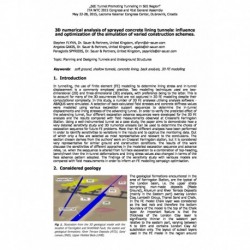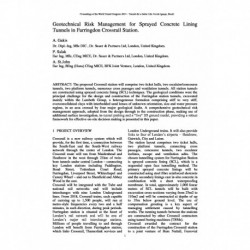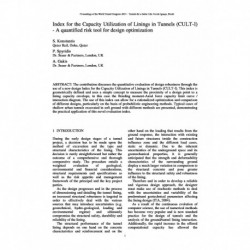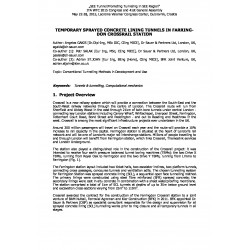No document
Search & filter
Search for a publication
Search & filter
List of products by author: A. Gakis
-
3D numerical analysis of sprayed concrete lining tunnels: influence and optimization of the simulation of varied...
Abstract: In tunnelling, the use of finite element (FE) modelling to determine lining stress and in-tunnel displacement is a commonly employed practice. Two modelling techniques used are two-dimensional (2D) and three-dimensional (3D) analysis, with preference being to the latter. This is to account for many of the 3D occurrences that are not captured in 2D FE modelling despite their computational...
0,00 € -
Geotechnical Risk Management for Sprayed Concrete Lining Tunnels in Farringdon Crossrail Station
Abstract: The proposed Crossrail station will comprise two ticket halls, two escalator/concourse tunnels, two platform tunnels, numerous cross passages and ventilation tunnels. All station tunnels are constructed using sprayed concrete lining (SCL) techniques. The geological conditions were the principal challenge for the design and construction of the Farringdon station tunnels, excavated mainly within...
0,00 € -
Index for the Capacity Utilization of Linings in Tunnels (CULT-I) - A quantified risk tool for design optimization
Abstract: The contribution discusses the quantitative evaluation of design robustness through the use of a new design Index for the Capacity Utilization of Linings in Tunnels (CULT-I). This index is geometrically defined and uses a simple concept to measure the proximity of a design point to a lining capacity envelope, in this case the Bending moment-Axial force capacity limit...
0,00 € -
Temporary sprayed concrete lining tunnels in farringdon crossrail station
Abstract: Crossrail is a new railway system which will provide a connection between the South-East and the South-West railway networks through the centre of London. The Crossrail route will run from Shenfield and Abbey Wood in the east through 21km of twin-bore tunnels under central London - connecting key London stations including Canary Wharf, Whitechapel, Liverpool Street, Farringdon, Tottenham Court...
0,00 €




